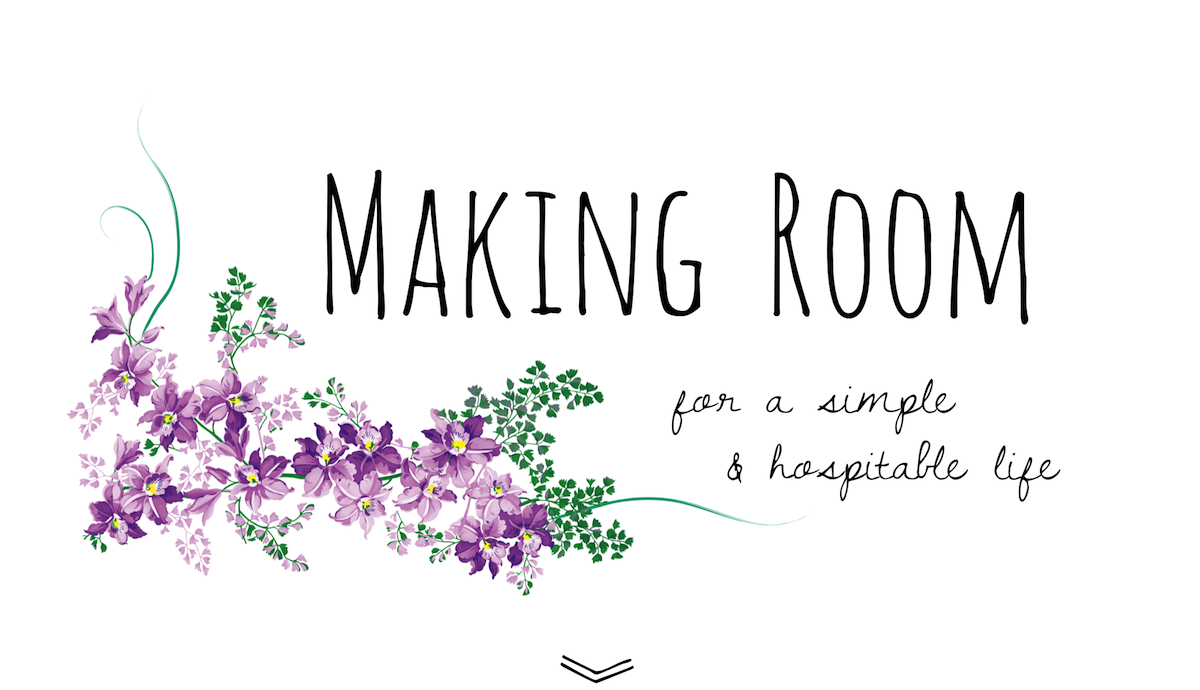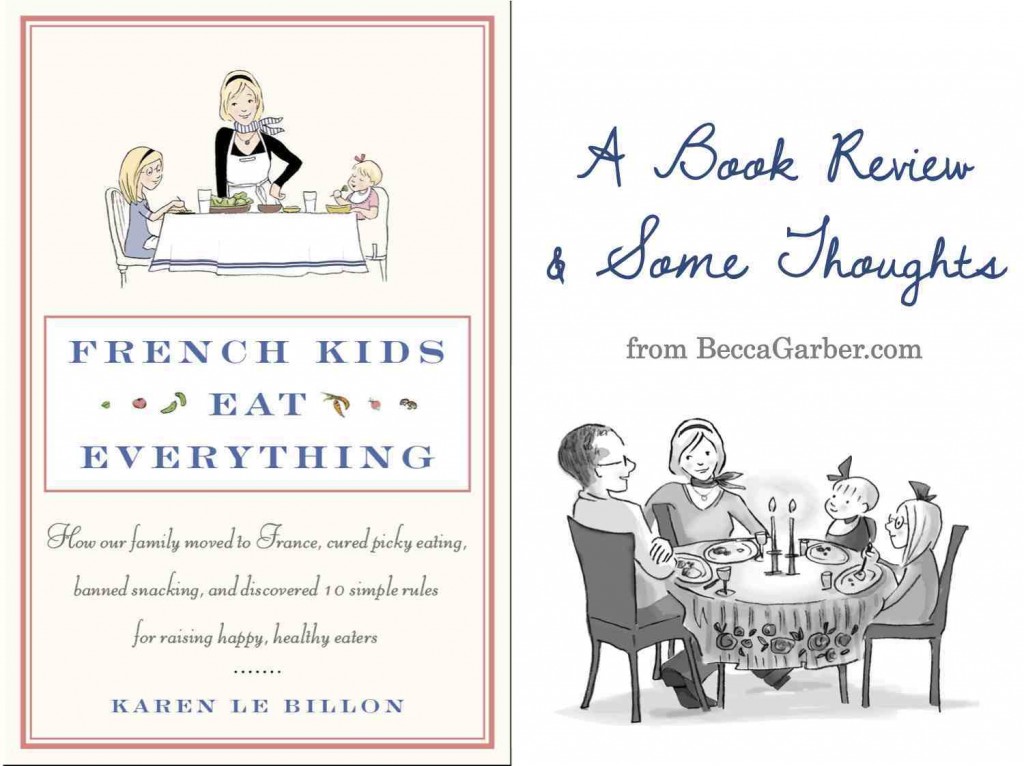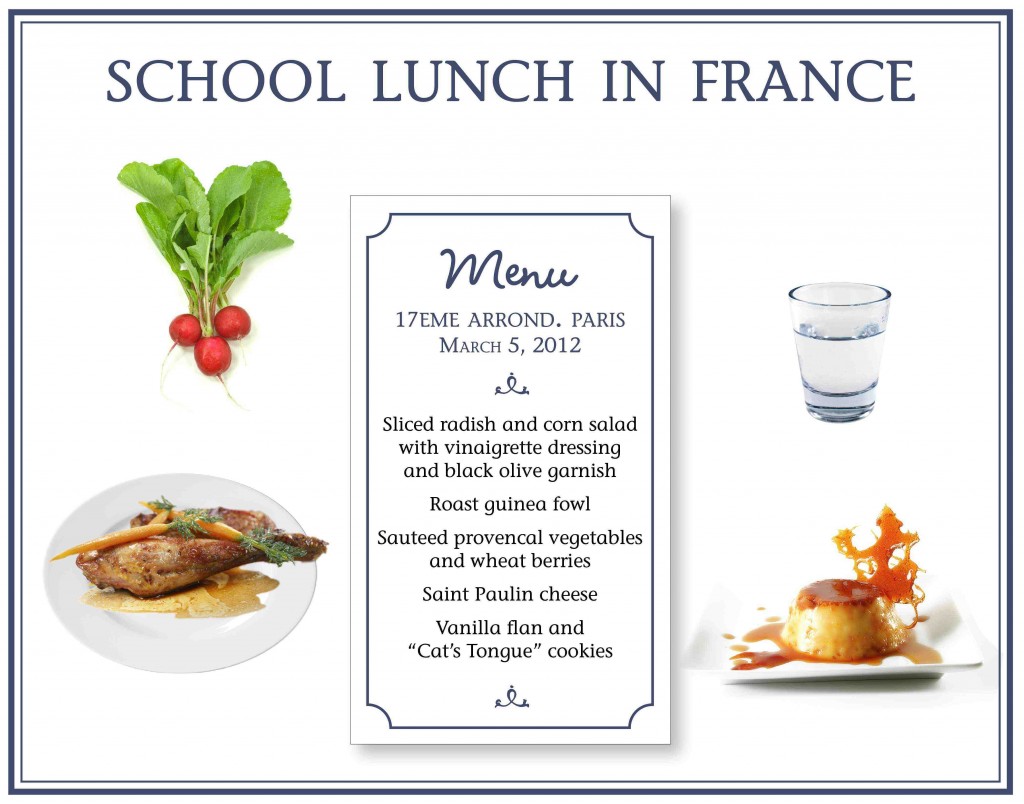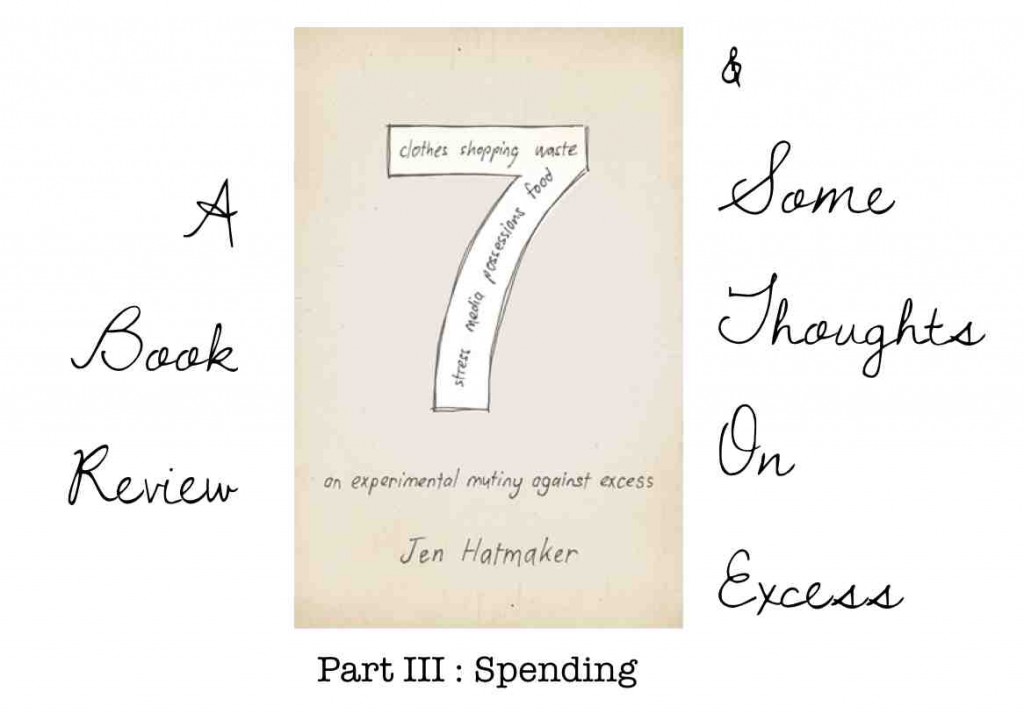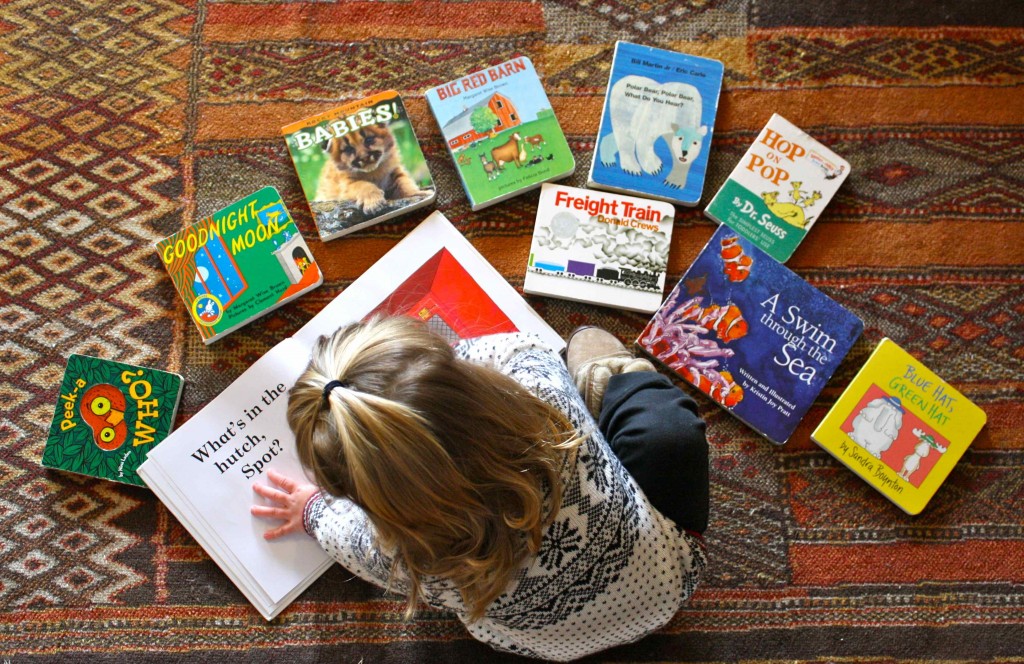I’ve wanted to read French Kids Eat Everything since it was first published. The title seemed so promising and the subject – encouraging my children to eat well – is a daily occupation in my home. Finally, I got my hands on a copy and read the book from cover to cover.
It was ok. Honestly, I think my problem was that I didn’t fall in love with the author. She came across as too self-conscious, excited one moment about eating well and embracing a food culture and then lazy and unmotivated in the next.
Hmm… maybe she reminded me too much of me? That could be my problem…
The book chronicles one year in the life of a Franco-Canadian family. The author – Karen Le Billon – has always wanted to live in her husband’s hometown in coastal France and jumps at the chance to do so for a year. During their year in France, she is alternately overwhelmed and inspired by the French food culture around her. She has a hard time stomaching the unfamiliar dishes, as do her two young daughters.
Her older daughter is attending a local school, though, and her parents-in-law are watching the way she feeds and educates her children. She is under enormous pressure to conform to the food culture around her. Everyone is telling her how her children should eat and what they should eat. Everyone is astonished when her children refuse food, throw tantrums at the table, or snack anytime and everywhere.
Meanwhile, Karen’s jaw is slowly dropping as she learns more and more about the way French children eat. They love to eat. Food is a delight, an experience, something to be savored. Eating takes time. It only occurs at a table, surrounded by others, four times a day: breakfast, lunch, a 4pm gouter (snack), and dinner. All food should be tasted, and if children don’t like it the first time, they just try it again until they do. Parents are deeply involved in their children’s food “education,” teaching them from their earliest days that all food is to be enjoyed, savored, and eaten on a schedule.
To Karen, it all seemed to good to be true. Inspired (as well as pressured), Karen decided to try to overhaul her family’s approach to food and replace it with the French food culture. Through a year of trial and error, highs and lows, and many hiccups, the author and her family completely changed their approach to vegetables, table manners, snacking, and food appreciation.
Truly, I was amazed. Through going back to the drawing board, presenting food in new and interesting ways, and transforming her own attitude towards food, the author created a new food culture for her family. By the end of the year, her daughters fit the description of French children I gave above.
In an interview by a Bon Appetit writer, Karen explains more about the French approach to food education. I loved this summary: “The French believe that teaching a kid to eat is just as important as, and just as time consuming as, teaching them to read. When you teach a kid to read, you teach the alphabet, then words, sit with them, read with them. The French feel that way about eating. They have a long-term view. They also don’t get frustrated when there are bumps in the road. Some kids take longer to read than others, but they don’t give up and say, “This kid is a picky eater, she just doesn’t like broccoli.” You don’t treat fear of foods as a personality trait, you treat it as a phase.”
My two favorite takeaways from the book are Karen’s 10 French Food Rules and several simple, kid-friendly recipes in the back of the book. Both of these resources put everything in black and white, making “eating French” seem much more doable. Though I would rate the quality of writing at 3 stars, I thought these two resources redeemed the book for me. Here are her 10 Rules:
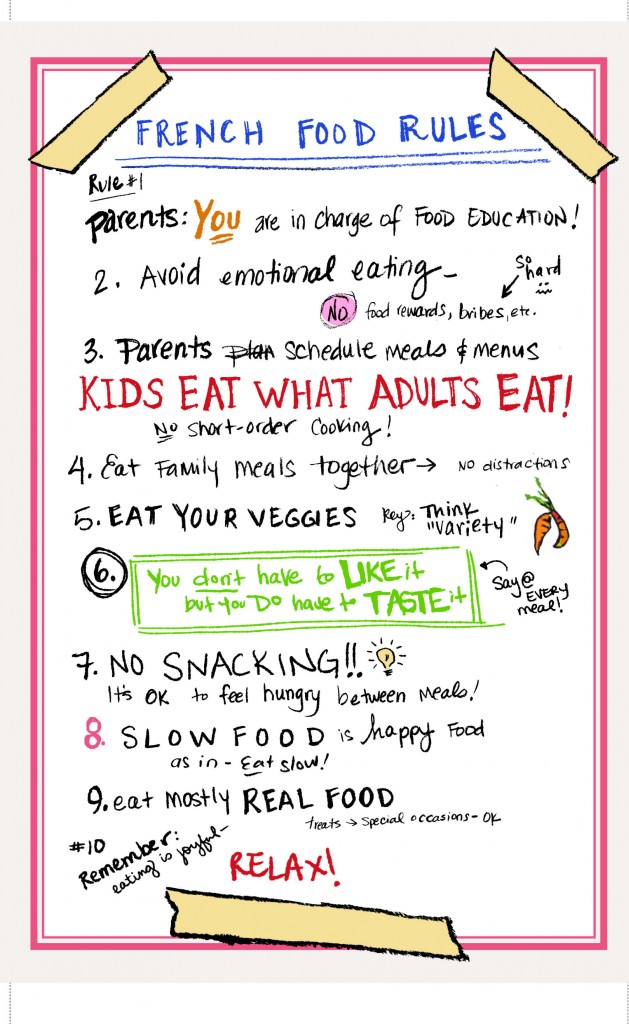 This list always gives me pause. Even though we might be doing pretty well on Rule 4, we really need to work on Rules 7 and 8! I’d like to use some of the recipes in the back of the book – especially her no-crust, 5-minute quiche recipe – to continue to help us enjoy real, fresh, and flavorful food.
This list always gives me pause. Even though we might be doing pretty well on Rule 4, we really need to work on Rules 7 and 8! I’d like to use some of the recipes in the back of the book – especially her no-crust, 5-minute quiche recipe – to continue to help us enjoy real, fresh, and flavorful food.
Have you read this book? Do you apply any of the 10 French Food Rules in your home?
